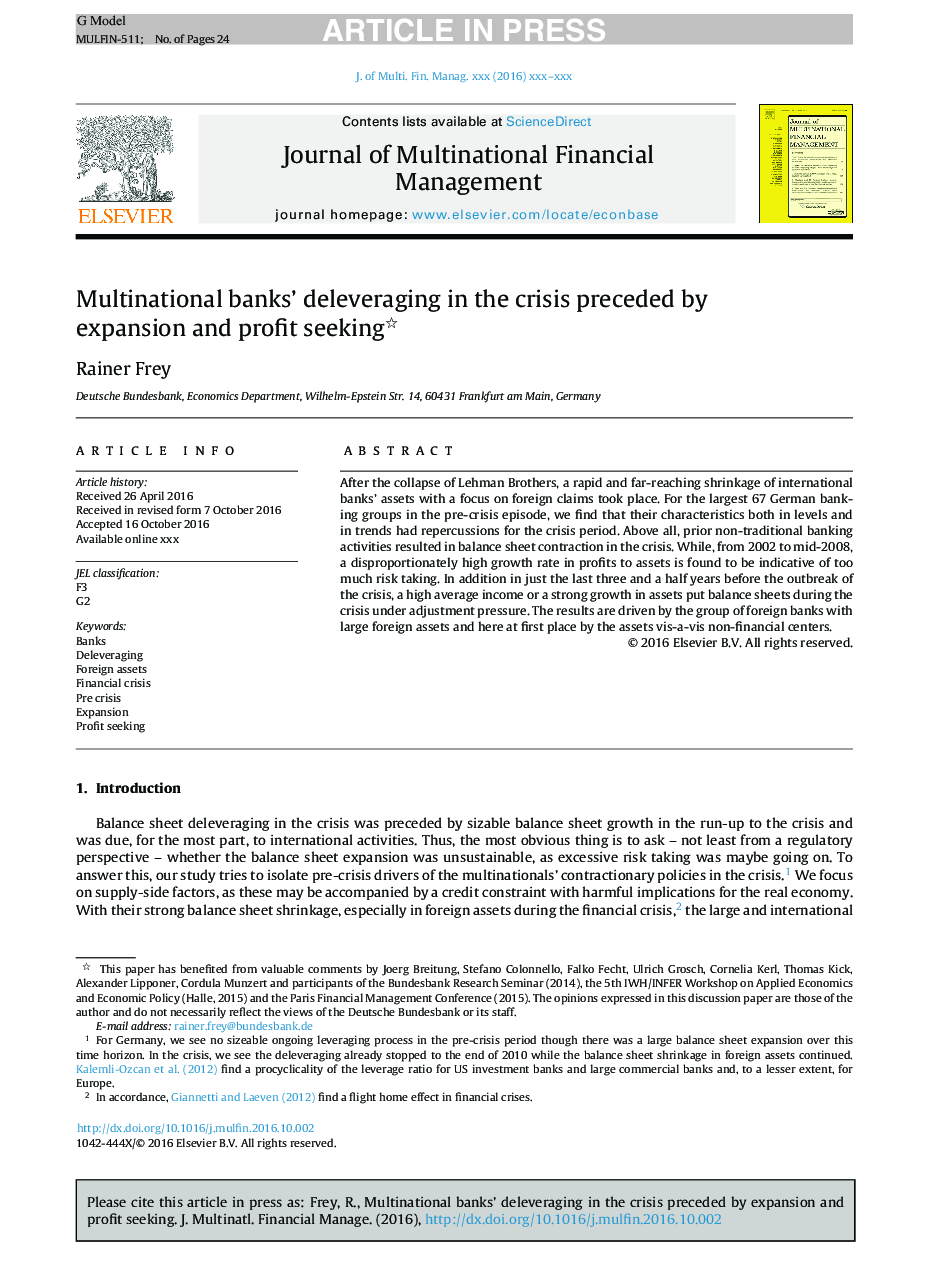| Article ID | Journal | Published Year | Pages | File Type |
|---|---|---|---|---|
| 5101606 | Journal of Multinational Financial Management | 2016 | 24 Pages |
Abstract
After the collapse of Lehman Brothers, a rapid and far-reaching shrinkage of international banks' assets with a focus on foreign claims took place. For the largest 67 German banking groups in the pre-crisis period, we find that their characteristics both in levels and in trends had repercussions for the crisis period. Above all, prior non-traditional banking activities resulted in balance sheet contraction during the crisis. A disproportionately high growth rate in profits to assets from 2002 to mid-2008 is found to be indicative of too much risk taking. High average income and strong growth in assets in the three and a half years before the crisis put balance sheets during the crisis under adjustment pressure. The results are driven by the group of banks with large foreign assets and especially by the withdrawal of assets vis-a-vis non-financial centers.
Related Topics
Social Sciences and Humanities
Economics, Econometrics and Finance
Economics and Econometrics
Authors
Rainer Frey,
